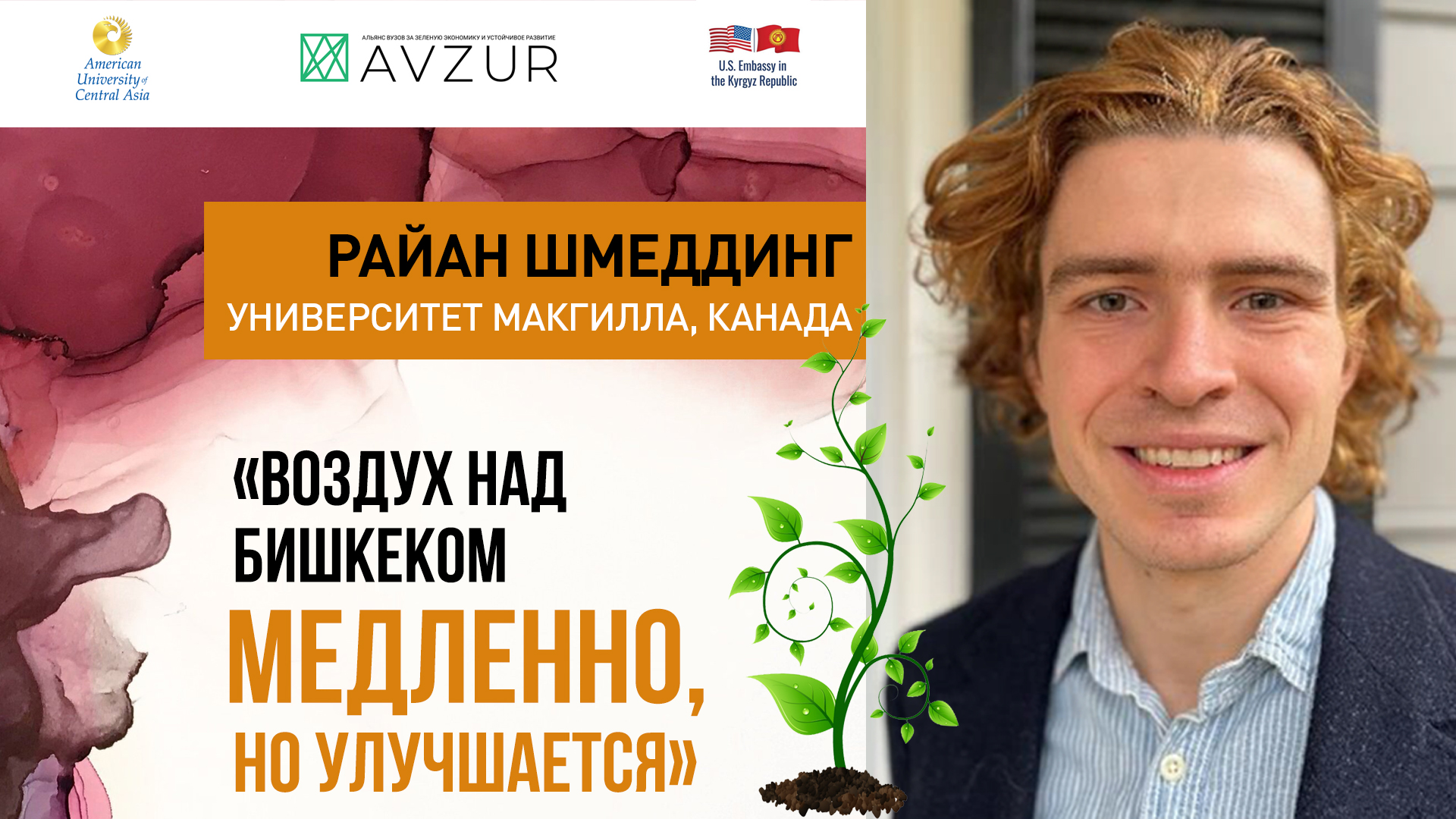December 9, 2021

On December 2, a guest lecture by Ryan Schmedding, a researcher at the US Embassy, was held in an online format, organized by the AUCA Center for Environmental Studies and Development (CED), the Alliance of Universities of the Kyrgyz Republic for Green Economy and Sustainable Development (AVZUR) together with the US Embassy in the Kyrgyz Republic.
In his speech, the speaker not only talked about how dirty air is formed and the types of pollutants, about theharmful effects of dirty air on human health, but also analyzed the pros and cons of various tools for monitoring air quality, as well as sensor data for Bishkek. According to the expert, long-term data demonstrate a slow improvement in air quality over our capital. However, not everything is so cloudless and transparent here…
Sensors of the US Embassy tracking air pollution in Bishkek showed that in Bishkek in 2019 and 2021, the air was dirtier than in 2020 during the lockdown period. In 2020, there is no doubt that the air indicators in Bishkek improved in certain months, even though anomalies of high air pollution indicators were observed in certain periods and days.
However, despite a slight decrease in some indicators, such as sulfur dioxide, other indicators, such as propane, showed an increase, especially in the winter season – even during the lockdown in 2020, as well as in 2021.
"The answer to the question of why air pollution indicators are increasing or, if they are decreasing, then only slightly, is that air pollution is strongly influenced by the burning of coal, biomass, dust, including from mining. As well as climate change, which manifests itself in dust and sand storms and frequent temperature inversions - all this causes spikes in air pollution without changing emissions. At the same time, transport does not significantly affect the air quality in Bishkek," - commented the analyzed data for Bishkek Ryan SCHMEDDING.
According to the expert, simple and at the same time effective solutions can solve the problem of air pollution – such as burning firewood or mature coal (coal briquettes) instead of the current immature coal, gasification of the population, the introduction of "green" heating solutions. The expert considers pricing and logistics issues to be the main obstacles that can slow down the introduction of new solutions and that need to be solved first of all.
The participants of the event asked the guest a lot of questions about Kyrgyzstan, including which countries and cities can become an example for us in the fight for clean air. Ryan Schmedding immediately named two capitals – London and Ulaanbaatar - as effective examples of fighting smog.
"Mongolia is a very good example to follow. Their experience can be perfectly used for Kyrgyzstan – they had a very high level of air pollution, and now they have almost solved this issue. The country has shown good results, geographically and economically Mongolia and Kyrgyzstan are similar to each other," - the expert said.
Recall that the successful experience of Mongolia in the fight against air pollution, which Kyrgyzstan can adopt, has already been discussed by domestic scientists at the AVZUR conference in October 2021.
You can view the full presentation of Ryan Schmedding here.